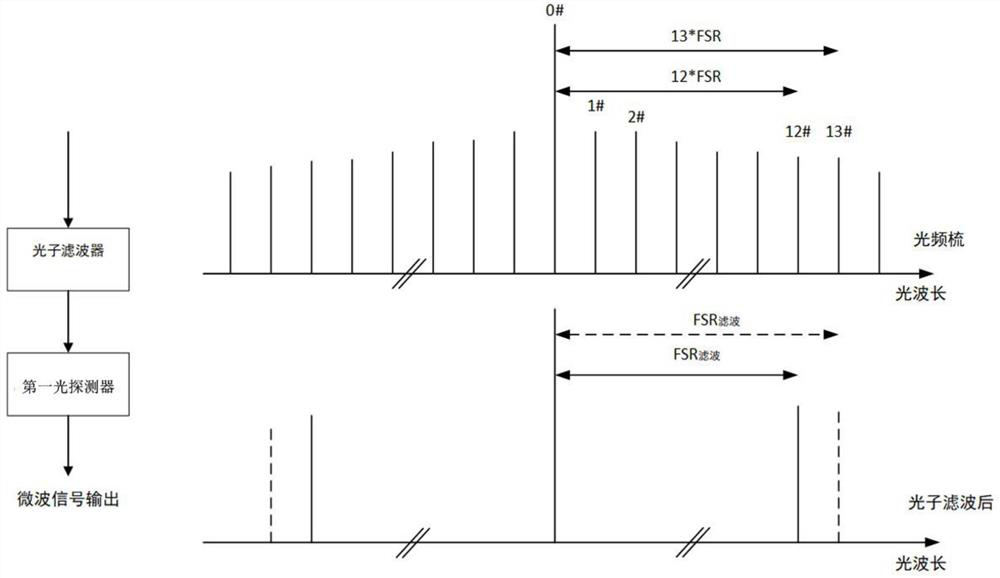Microwave generating device based on orthogonal polarization mode Brillouin laser Kerr optical frequency comb
A microwave generating device and orthogonal polarization technology, which is applied in the microwave field, can solve problems such as difficult integration, large size of optical microcavity, and poor noise performance, and achieve the effect of isolating and reducing noise influence, improving spectral purity, and reducing amplitude
- Summary
- Abstract
- Description
- Claims
- Application Information
AI Technical Summary
Problems solved by technology
Method used
Image
Examples
Embodiment Construction
[0049] The technical solutions of the present invention will be described below in conjunction with the accompanying drawings. Based on the embodiments of the present invention, all other embodiments obtained by those of ordinary skill in the art are in the range of the present invention without making creative labor premise.
[0050] In the description of the present invention, it is to be explained that belongs to "center", "upper", "lower", "left", "right", "vertical", "horizontal", "within", "outside", etc. The direction or positional relationship of the indication is based on the direction or positional relationship as described by the drawings, is meant to facilitate the description of the present invention and simplified description, rather than indicating or implying that the device or component must have a specific orientation. Construct and operation, so it is not understood to be the limitation of the invention. In addition, "first", "second" is only used for descriptio...
PUM
 Login to View More
Login to View More Abstract
Description
Claims
Application Information
 Login to View More
Login to View More - R&D
- Intellectual Property
- Life Sciences
- Materials
- Tech Scout
- Unparalleled Data Quality
- Higher Quality Content
- 60% Fewer Hallucinations
Browse by: Latest US Patents, China's latest patents, Technical Efficacy Thesaurus, Application Domain, Technology Topic, Popular Technical Reports.
© 2025 PatSnap. All rights reserved.Legal|Privacy policy|Modern Slavery Act Transparency Statement|Sitemap|About US| Contact US: help@patsnap.com



